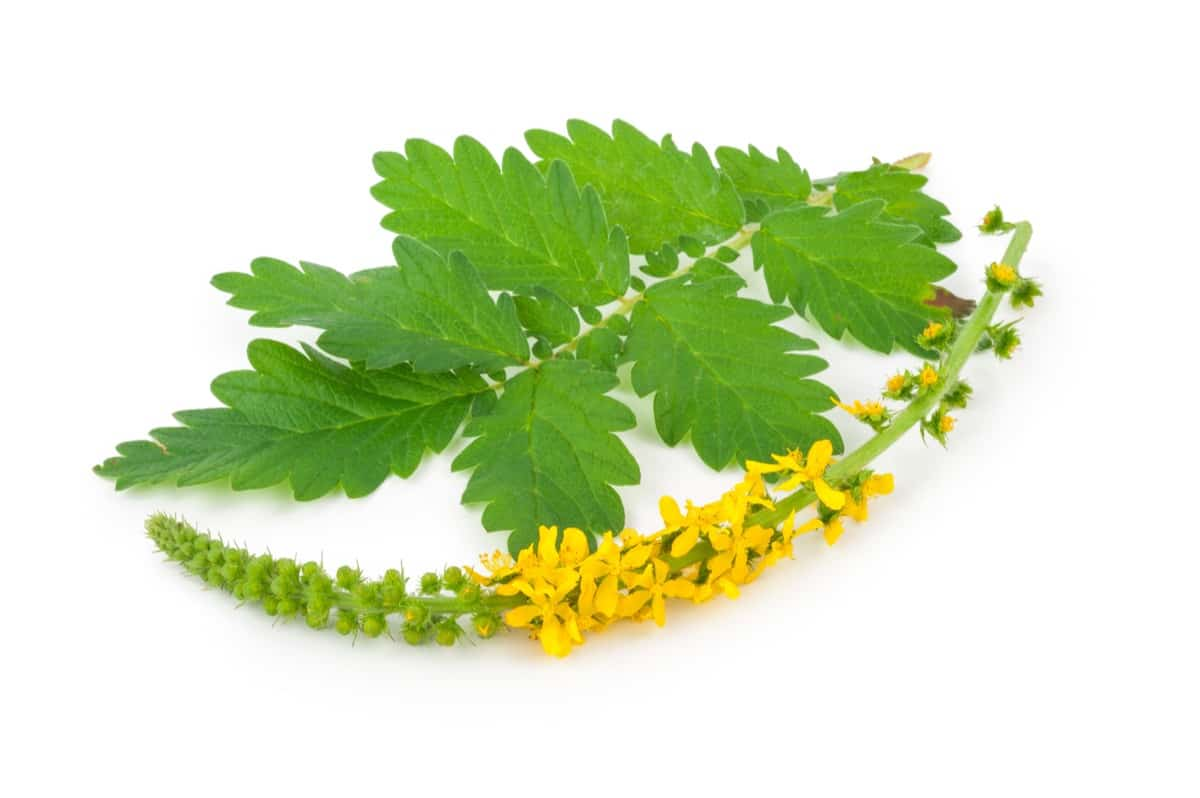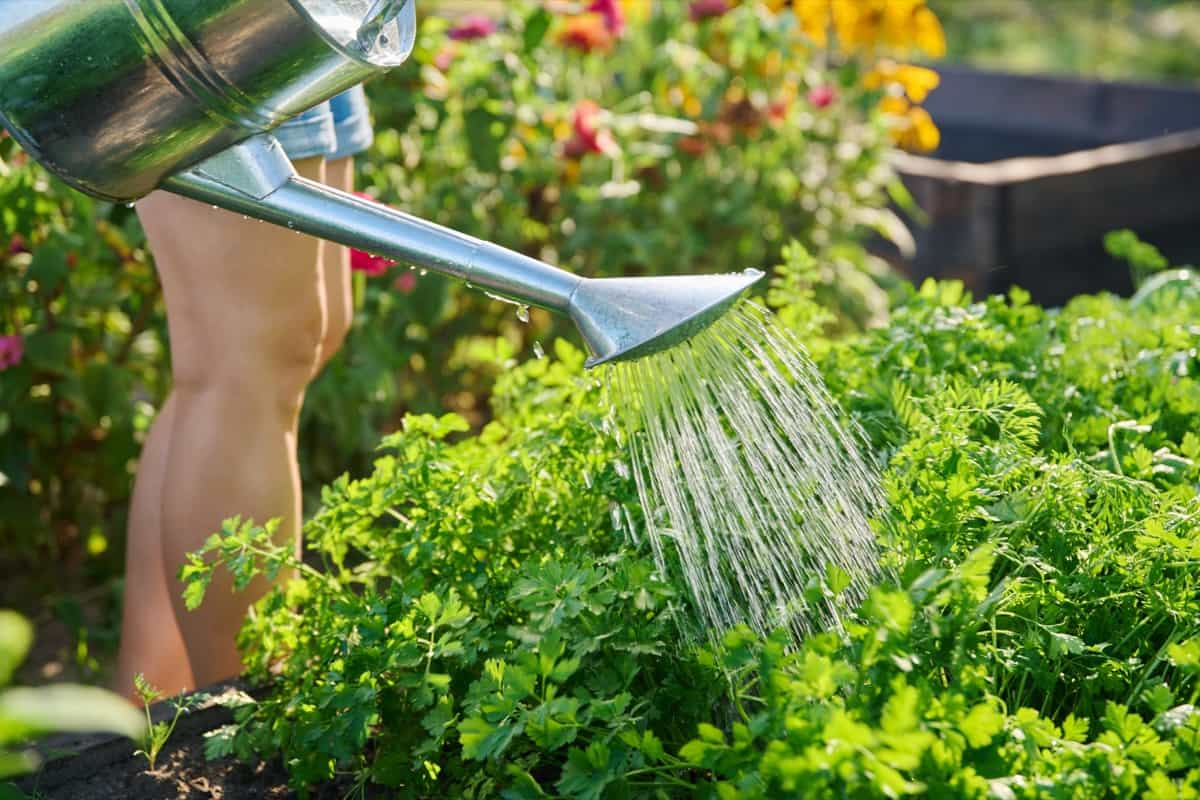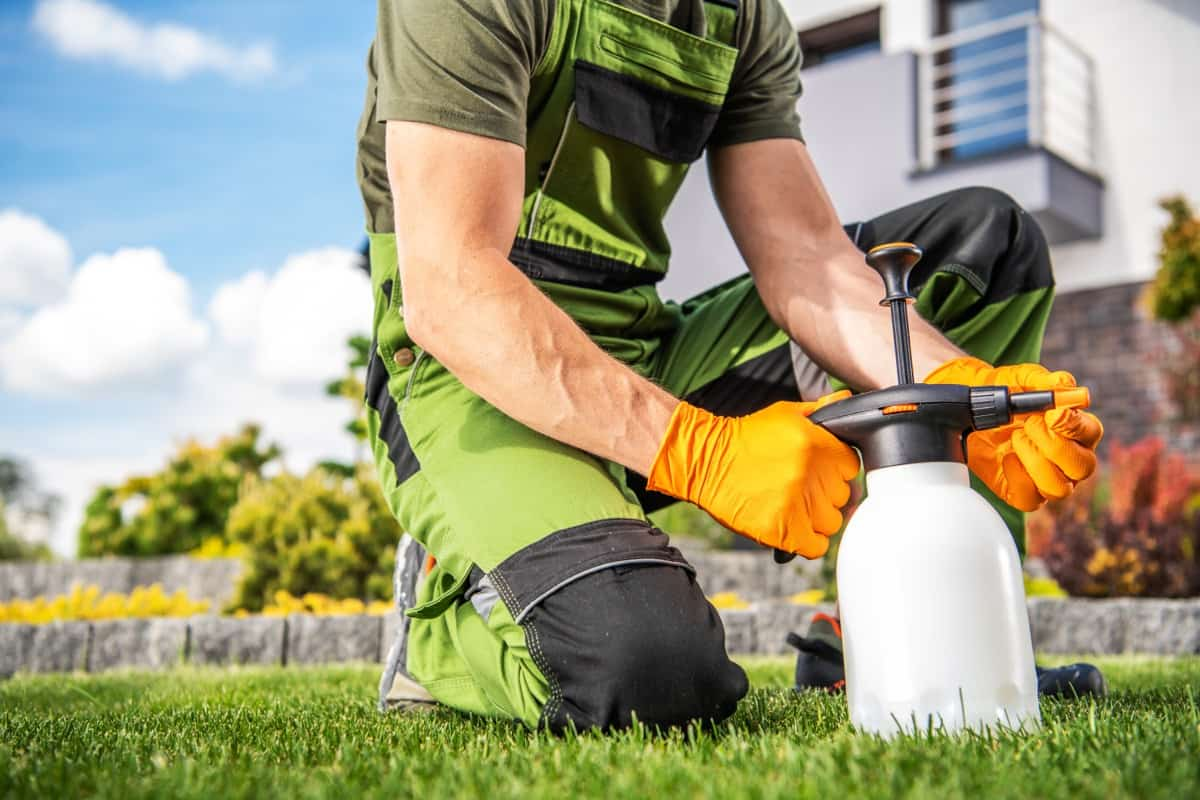Agrimony is a popular herb that can add beauty to your garden. It’s easy to grow, and its flowers are colorful and cheerful. However, like most plants, Agrimony needs the care to thrive. Agrimony is a beautiful plant that can be found in gardens all over the world. It can add color and texture to your garden, but it can also be harvested and used in natural remedies. This shrub grows to a height of 1-2 feet and has stems covered in small, prickly hairs.

The leaves are opposite, lance-shaped, and measure 3-4 inches long and 2-3 inches wide. These plants grow tall with spiky leaves and small yellow flowers that may be arranged in spikes or simple whorls on the stem. Agrimony is a popular choice for an herb garden due to its ease of growth, long flowering period, and attractive yellow flowers. However, depending on the variety, Agrimony can be tough or tender, so choosing the right type for your garden is important.
How to Grow and Care for Agrimony in Your Herb Garden
Climate Suitable for Growing Agrimony in Your Herb Garden
Agrimony is a great choice for a small herb garden because it is hardy and tolerant of some shade. It can grow in partial sun but prefers moist, well-drained soil. Agrimony grows best in locations with mild winters and hot, dry summers. The flower head consists of 10 to 20 yellow flowers blooming from early summer into fall. Agrimony is an easy-to-grow perennial that thrives in most garden soils but requires full sun to do well.
In the fall, plant Agrimony in a sunny location where it can receive at least 6 hours of direct sunlight daily. In early spring, when new growth begins, move it to a spot with morning or afternoon sunlight. As the plant matures, gradually reduce the direct sunlight it receives to between 3 and 4 hours per day. Water regularly during warm weather and fertilize in late spring or early summer if desired.
Soil Requirement for Growing Agrimony in Your Herb Garden
If you are interested in growing Agrimony, you will need to consider a few things. First, the soil requirements for this plant change depending on the cultivar you choose to grow. Some varieties prefer well-drained soil with a little organic material, while others may do well in heavier clay soils. Second, Agrimony does best in full or partial sun. Finally, water your plants regularly and fertilize them with a balanced fertilizer. Agrimony prefers soil that is acidic, moist, and well-drained.
In case you missed it: How to Grow and Care for Daffodils in Containers

Water Requirement for Growing Agrimony in Your Herb Garden
Agrimony grows best in full or partial sun and needs moist soil but can tolerate dry conditions. Water the plant regularly during dry periods and fertilize it monthly with a nitrogen-rich fertilizer. Dig up old flower stems to prevent them from becoming woody and to give the Agrimony more room to grow. Water requirements for growing Agrimony will vary depending on where it is being grown and the size and type of Agrimony being grown.
Agrimony should be watered regularly during the growing season, usually once a week. This may increase if the plant is in a dry area or receiving less than average rainfall. Watering frequency can also be adjusted based on how much soil moisture the plant is getting; if adequate moisture is available, watering once a week may be sufficient, but if soil moisture levels are low or non-existent, watering every day may be necessary.
In case you missed it: How to Grow and Care for Petunias in Containers: A Beginners Guide

Propagating Agrimony
From Seeds
Agrimony can be propagated from seeds, but the process is not easy, and success rates are low. To start, collect a handful of fresh seeds from the plant. You should not dry the seeds, or they will not germinate. Place the seeds in a sterilized container with moist peat moss or vermiculite and place them in a warm place.
Check on them every day and water as necessary. After two to three weeks, you should see small leaves emerging. Continue to water and monitor the plants until they are large enough to be potted up. At this point, transfer the plants to larger containers and continue growing them indoors for six to eight months before planting outdoors in late winter or early spring.
From Root Cuttings
To propagate Agrimony from root cuttings, take 2-3 healthy rooted cuttings from the plant you wish to grow and make a slant cut just below the surface of the soil. Be sure to remove any brown or rotting wood before taking a cutting. Make a new slant cut about 1 inch below the first one and remove all loose soil and green leaves. Dip the cutting into water and place it in a rooting medium such as vermiculite or perlite. After two weeks, you will see new growth.
Transplanting Agrimony Seedlings
Agrimony is a popular ground cover for herb gardens. It grows quickly and forms a dense mat of green leaves. To transplant Agrimony seedlings, establish a healthy root system by removing any dead or damaged roots. Then prepare the planting area by removing any lawnmower grass, crop residue, or rocks. Gently loosen the soil with your fingers and pull out the plant. Plant the Agrimony seedlings in the prepared planting area and water them well. After the plants have established themselves, thin them to 1 to 2 inches apart.
In case you missed it: How to Grow and Care for the Crown of Thorns in Pots

Agrimony Plant Care
Fertilizer Requirement for Growing Agrimony in Your Herb Garden
Agrimony is a hardy perennial that grows 1-2 feet tall and has bright yellow, lacy flowers in late spring or early summer. A good fertilizer for Agrimony includes nitrogen, phosphorus, potassium, and magnesium. Water the plants regularly and watch for aphids, who are attracted to the nectar and will feed on the leaves. Agrimony is a hardy perennial that can be grown in most regions of the country. Agrimony prefers well-drained soil and partial sun to full sun. The plant grows to 1-2 feet tall with rounded, evergreen leaves 2-3 inches wide.
Fertilize your plants every week during the growing season with a dilute solution of fish emulsion or compost tea; this will help promote strong growth and discourage weed growth. Agrimony prefers a pH range of 6.0-7.0, so add wood ash to the soil before planting if you want to adjust the pH closer to its natural level. Mulch your plants after flowering to keep the soil cool and moist, and enjoy these attractive plants in your herb garden.
In case you missed it: How to Make Grass Clippings Compost Fertilizer: Homemade Recipe, DIY for Container, Indoor, and Backyard Garden Plants

Agrimony Plant Care in Winter
Agrimony is a deciduous shrub with small, sweet-scented flowers in winter. The plant prefers full sun but will tolerate partial shade and can be grown in most soils. Agrimony needs little care in the winter other than watering occasionally if the soil becomes dry. Remove any dead or diseased plants before winter arrives. Fertilize in late fall or early winter when new growth begins, using a water-soluble organic fertilizer.
Cut back all the old wood to about one-third of the height of the plant in late winter to early spring. Plant Agrimony in a well-drained soil mix that can dry out between waterings. Protect Agrimony from heavy frost by covering the plants with a layer of fabric or plastic wrap on cold days. Cut back ruthlessly after bloom in the early fall to prevent overcrowding and promote new growth in subsequent seasons. Deadhead spent blooms if necessary to maintain interest throughout the winter months.
Pruning Agrimony Plant
When pruning Agrimony, use a sharp pair of scissors and avoid cutting into the stem. Start by snipping off any dead or damaged branches at the base. After that, cut the stems near the main branch or trunk with a sharp knife. Remove brown and wilted leaves, and trim away any spindles or other growth preventing flowers from forming. Finally, clean up the ends of the stems with a garden hose if necessary.
Pests and Diseases of Agrimony and Their Control
Aphids feed on the leaves and flowers of Agrimony, causing them to turn yellow or brown and develop lesions. If left unchecked, aphids will ruin an entire crop of Agrimony. Several ways to control aphids on Agrimony: using insecticidal soap or spray; planting varieties that resist aphid damage; monitoring populations regularly and removing infested plants; or releasing parasitic wasps that feed on Aphids.
In case you missed it: How to Grow and Care for Brussels Sprouts in Containers: Step-By-Step Planting Process for Beginners

Agrimony is susceptible to many pests, but the most common are aphids and whiteflies. Whiteflies suck sap from the plant and can also cause it to wilt. There are many ways to control these pests: use insecticidal soap or oil when Aphids are present: This will kill the adults and their eggs. Apply a light misting of water when necessary to help spread soap or oil throughout the plplant’sanopy.
When using insecticidal soap or oil, always read the product label carefully for directions on how long to treat and what equipment to use. Some types of soaps and oils need to be reapplied every few days, while other products should last for several weeks. Birds may also eat pests attracted by Agrimony flowers: Keep your herb garden well-manicured so birds do not build nests in nearby trees or shrubs frequented by Agrimony flowers.
Agrimony is not invasive, but it does spread by underground runners. There are many diseases of Agrimony, but most can be controlled by using cultural practices such as watering in moderation, keeping the soil evenly moist, and fertilizing with an organic nitrogen-rich fertilizer when needed. Using resistant varieties helps to minimize the need for chemical treatments.
Harvesting Agrimony
Consider Agrimony if you are looking for a beautiful and versatile garden plant. This hardy plant can be grown in various climates and soils, making it a great choice for beginners or those with limited space. Agrimony is typically harvested in the fall but can be harvested any time after the flowers have faded. To harvest Agrimony, gently pull the entire stem out of the ground. Be sure not to damage the roots. After cutting the stem, remove any attached leaves and place them into a jar or container.
Conclusion
Agrimony is a popular garden herb that can be grown in any climate, and it boasts many benefits for the gardener and the environment. Agrimony is a tough plant capable of withstanding environmental stress. That makes it an ideal candidate for a tough herb garden where you can grow fresh food all year. Following these tips on growing and caring for Agrimony, you can enjoy this herb in your garden all year.
- Gardening Techniques in Planting Vegetables
- Where to Place Indoor Plants in Your Home
- How to Grow Tomatoes Organically at Home: A Comprehensive Guide
- Organic Gardening on a Budget: Low-Cost Methods and Materials
- Gongura Seed Germination and Planting Methods
- Cabbage Seed Germination and Selection
- Broccoli Seed Germination and Selection
- Asparagus Seed Germination and Variety Selection
- Seasonal Flower Gardening: Best Practices for Spring, Summer, Fall, and Winter
- How to Grow Hibiscus from Flower
- Plantation Ideas for Home Decoration: A Beginners Guide
- Flower Garden Designs and Layouts for Beginners
- Planting and Spacing Techniques in Papaya: A Beginner’s Guide
- Growing Gold: Essential Techniques for Planting Pineapples
- How to Make Kalanchoe Plant Bushy: Home Remedies and Solutions
- 11 Reasons Why Your Gardenia is Not Blooming: Home Remedies and Solutions
- Eco Elegance: The Guide to Designing a Drought-Tolerant Landscape
- Gardening on a Slope: Strategies for Hillside Landscaping
- Nourish and Flourish: Top Organic Mulches for Thriving House Plants
- Everything You Want to Know about Indian Mogra Flower: Discover Uses and Growing
- Green Thumb Success: Expert Tips for Cultivating Greenhouse Pumpkins All Year Round
- Maximize Growth & Flavor: The Ultimate Guide to Companion Planting in Herb Gardens
- How to Control Rhododendron Problems Naturally: Home Remedies and Organic Ways to Fix Them
- Natural Magic: The Remarkable Benefits of Cinnamon for Plants
- Best Steps to Revive Dying Tulip with Natural and Organic Treatment
- 10 Reasons Why Your Angel Trumpet is Not Blooming: Remedies and Treatment
- How to Fix Periwinkle Leaf and Flower-Related Problems: Natural Remedies and Solutions
- How to Fix Zinnias Leaf and Flower Problems: Discover Natural and Home Remedies
- Organic Steps to Induce Lemon Tree Flowers: A Comprehensive Guide
- Bloom Booster: Crafting the Perfect Homemade Bougainvillea Fertilizer
- Optimizing Growth: A Guide to Applying NPK Fertilizer for Potted Plants
- 10 Best Homemade Fertilizers for Rubber Plant: DIY Recipes and Application Method
- How to Boost Female Pumpkin Flowers: Effective Steps for More Flowers and High Yields
- Transform Your Indoor Garden: Top Benefits of Pink Salt for Houseplants
- 10 Best Homemade Fertilizers for Peacock Plants (Calathea): Easy DIY Guide
- Unlock Blooms: 9 Reasons Why Your Potted Chrysanthemum is Not Blooming